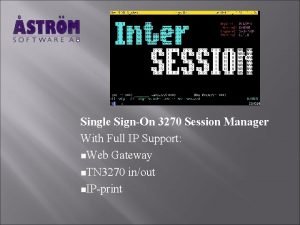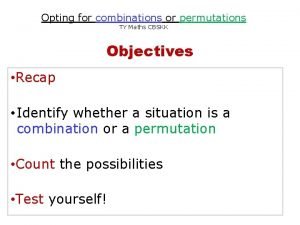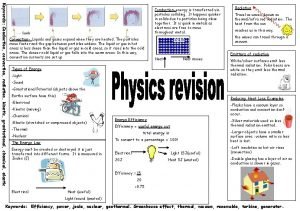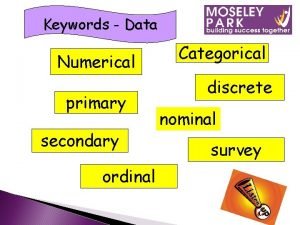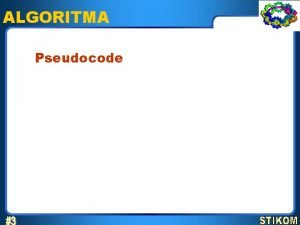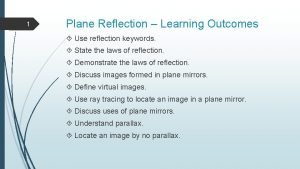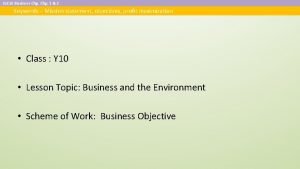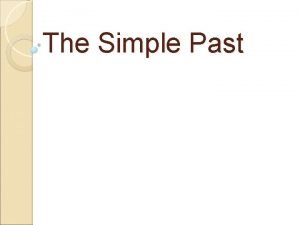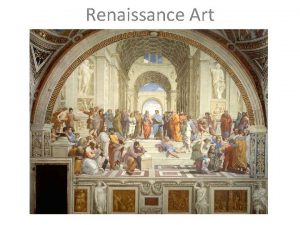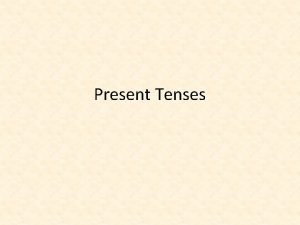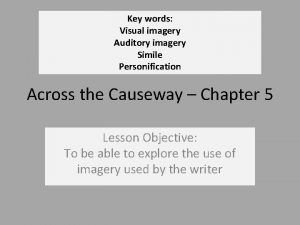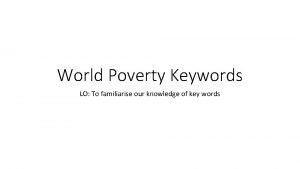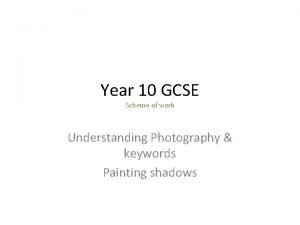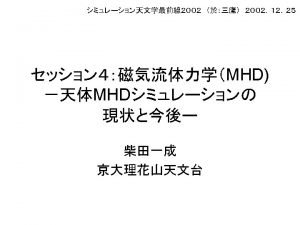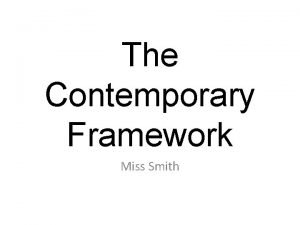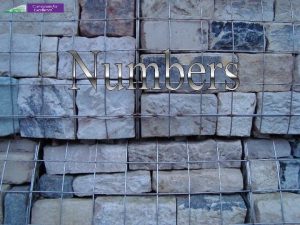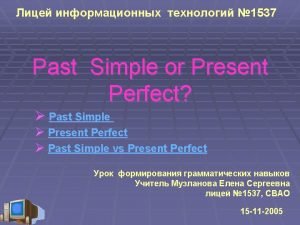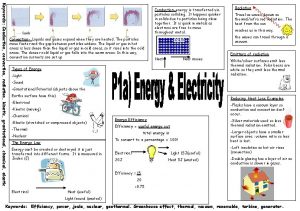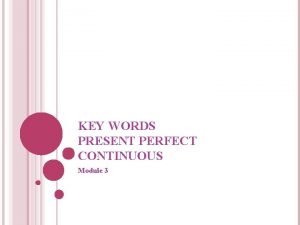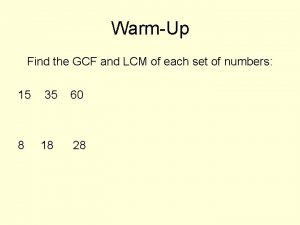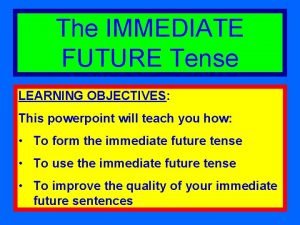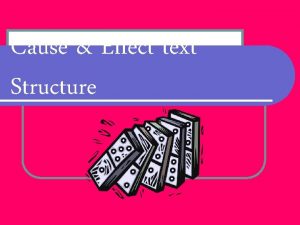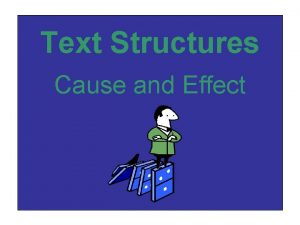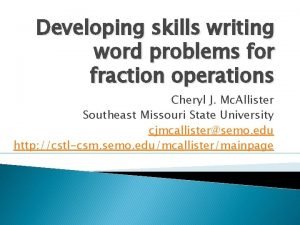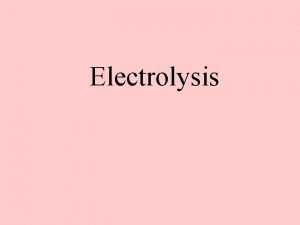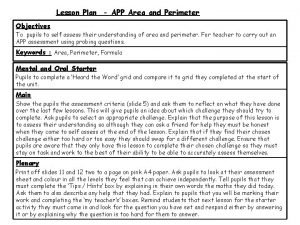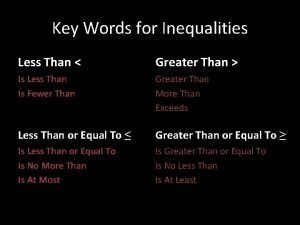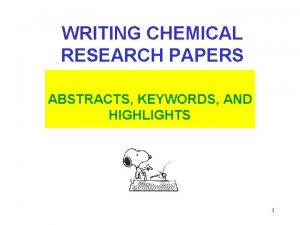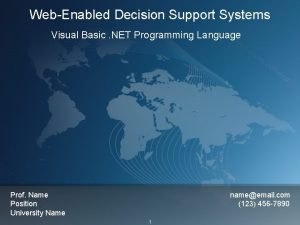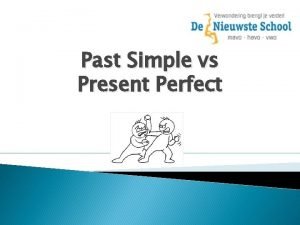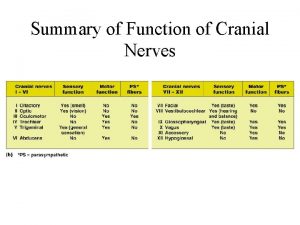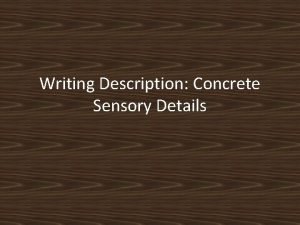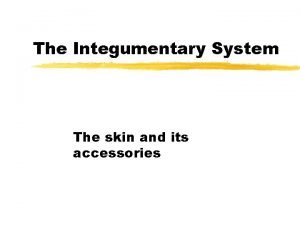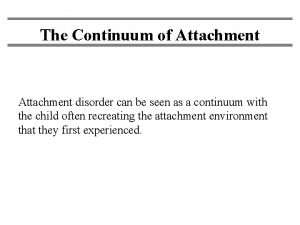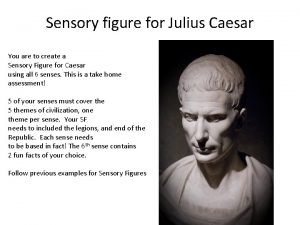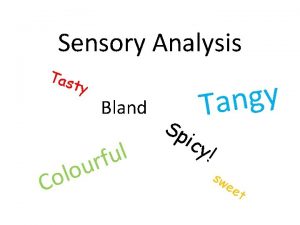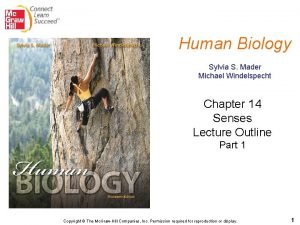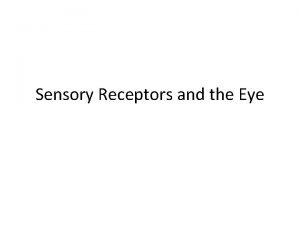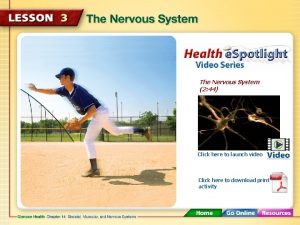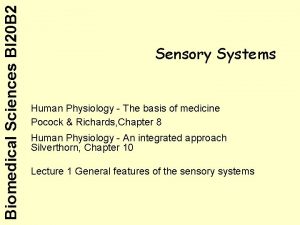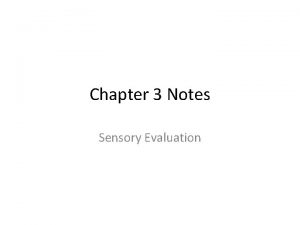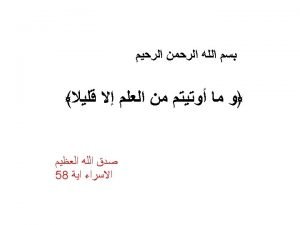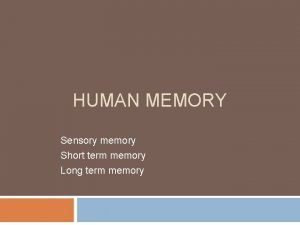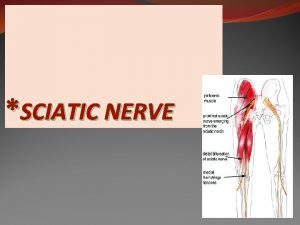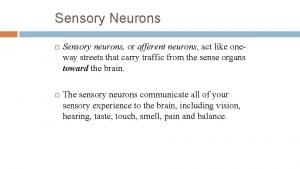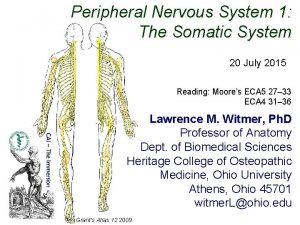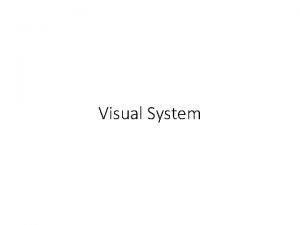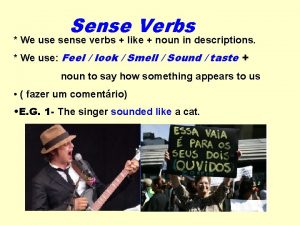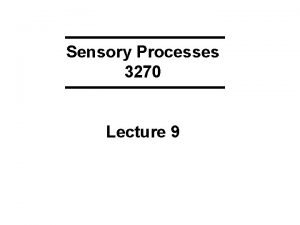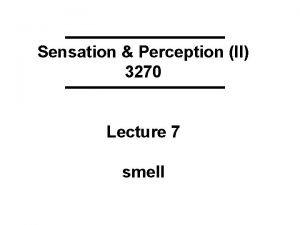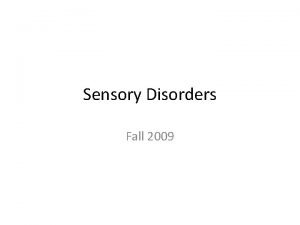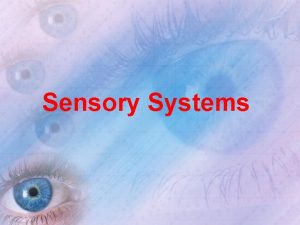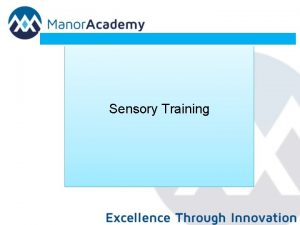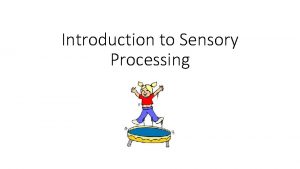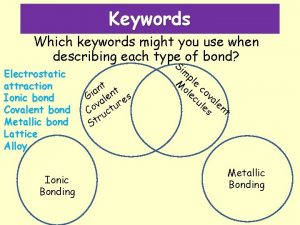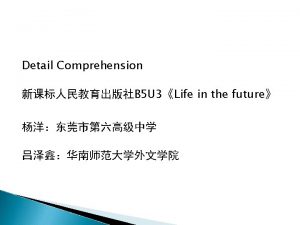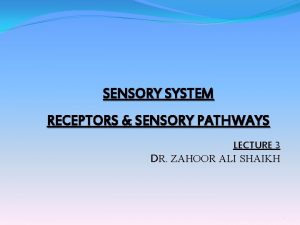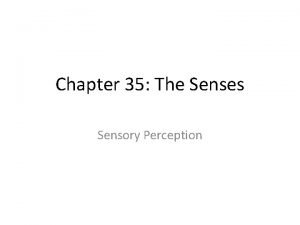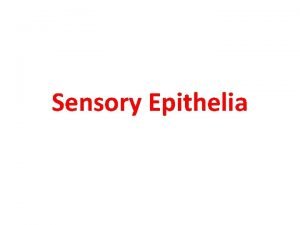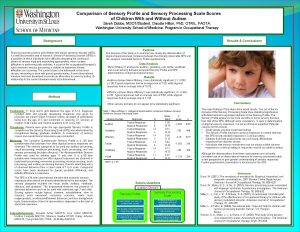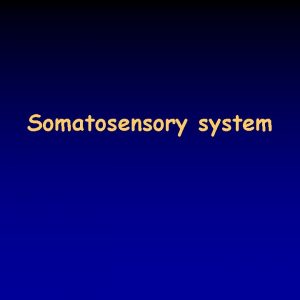Sensory Processes 3270 Lecture 4 KEYWORDS from Lecture




































































- Slides: 68

Sensory Processes 3270 Lecture 4

KEYWORDS from Lecture 3 Psychophysics Fechner, Weber, Threshold, Method of limits, staircase, Method of constant stimuli, two alternative forced choice, method of adjustment Signal detection theory, threshold as probability, sensitivity versus response bias, criterion, outcome matrix, hit/miss/false alarm or false positives/correct rejection, receiver operating characteristic curves (ROC curves), sensitivity, d-prime (d') Just noticeable difference, Weber fraction/law/constant, Fechner's law, Stevens' power law, magnitude estimation, standard stimulus, response compression, response expansion

The difference threshold • just noticeable difference (jnd) • Weber’s law (1834) the just noticeable increment is a constant fraction of the stimulus • Fechner’s law (1860) Weber Fractions sensation magnitude Taste proportional to 0. 08 logarithm (stimulus. Brightness intensity) 0. 08 assumption: all jnd’s are the same Loudness 0. 05 stood for 100 years! Vibration 0. 04 • Steven’s law (1961) Line length 0. 03 (“To honour Fechner and. Heaviness repeal his law”) 0. 02 sensation magnitude proportional to Electric shock 0. 01 (stimulus intensity) raised to a power 8% 8% 5% 4% 3% 2% 1%

Increase in intensity = constant Intensity Ernst Weber (1795 -1878)

Response compression Response expansion

Perceived magnitude Gustav Fechner (1801 -1887) Log (intensity)

Perceived magnitude S. S. Stevens (1906 -1973) (intensity) h


Consequences of Steven’s Law • response compression • response expansion • linear on a log scale

Somatosensory System section 3

Why? • Perception --- body parts (proprioception) --- touch --- special -- vibrissae antennae pain braille temperature • Protection • Temperature regulation • Limb arrangement and control • Head orientation (vestibular system) somatosensory

How? • Receptors • Neural pathways • Neural codes (remember those ‘common features’…) somatosensory

Coding in the somatosensory system • detection • identify modality (Müller's doctrine of specific nerve energies 1826; labelled lines); • identify properties and spatial form • magnitude intensity (APs/sec; frequency coding; population coding; thresholds); • location (absolute, two-point discrimination, topographical coding) • movement

MEISSNER’S CORPUSCLE (RA) MERKEL’S DISK (SA) RUFFINI CORPUSCLE (SA) PACINI CORPUSCLE (very RA) GLABROUS (non-hairy) SKIN

MEISSNER’S CORPUSCLE (RA) MERKEL’S DISK (SA) Free nerve ending HAIRY SKIN Nerve ending around hair (RA) PACINI CORPUSCLE (very RA) RUFFINI ENDING (SA)

SA RA

RA SA very RA SA

fine detail stretching hand grip control vibration

SPATIAL EVENT PLOTS SA (Merkel) RA (Meissner) RA (Pacinian)


MERKEL (SA) PACINIAN (v. RA)

SOMATOSENSORY CORTEX 4 th Trigeminal system from face CROSS OVER IN BRAIN STEM DORSAL COLUMNS 1 st 3 rd VENTRAL POSTERIOR LATERAL Nucleus of the thalamus 2 nd Somatosensory pathway



After a limb has been amputated, “phantom” sensations can sometimes be created by stroking other areas of skin.

Demonstrates: 1 plasticity, 2 Müller’s law of specific nerve energies

Area of somatosensory cortex representing finger tip stimulate finger tip over many days Larger area now devoted to this finger tip DEMONSTRATES PLASTICITY

PRESSURE THRESHOLDS Don’t vary much

POINT LOCALIZATION THRESHOLDS


RECEPTIVE FIELDS ON THE ARM

Afferent fibres SA RA PC Cortical cells in area 3 b (SA)


Lateral inhibition improves 2 -point discrimination

Trigeminal system from face CROSS OVER 1 4 3 b 2 5 3 a DORSAL COLUMNS Somatosensory pathways

Multiple representations 1 4 3 b 3 a 2 5 3 a -- muscle spindles 3 b -- SA (cutaneous) 1 ---- RA (cutaneous) 2 ---- joints

cutaneous mechanoreceptors Muscle spindles Joint receptors LIMB SENSING ORGANS Muscle spindles, cutaneous mechanoreceptors and joint receptors

Multiple representations 1 4 3 b 3 a 2 5 3 a -- muscle spindles 3 b -- SA (cutaneous) 1 ---- RA (cutaneous) 2 ---- joints


Secondary Somatosensory cortex Multiple representations 3 a -- muscle spindles 3 b -- SA (cutaneous) 1 ---- RA (cutaneous) 2 ---- joints Secondary Somatosensory cortex


superior colliculus

Superior Colliculus

Superior Colliculus

Active vs passive touch active “object” passive “sensation” identifying cookies cutters active 95% correct passive 49% correct

could distinguish judged as same JUDGING TEXTURE

ADAPT none Meissner’s RA Pacinian v. RA Slow freq Meissner’s RA Pacinian v. RA High freq Meissner’s RA Pacinian v. RA

POST-ADAPT chance DEMONSTRATES THAT VIBRATION NEEDED FOR TEXTURE

explore surface texture with tool demonstrates use of vibration

haptic perception Stereognosis: 3 d object perception by haptic exploration




SA RA BARE NERVE ENDINGS

TEMPERATURE response • Normal = 34 • Cold 5 -40 • Warm 30 -45 • Ratio (channel) coding • Paradoxical cold at high temps body temp cold fibres skin temp warm fibres

PAIN • pain insensitivity = bad • referred pain (eg. Angina to chest wall) • sharp 1 st followed by dull 2 nd • GATE theory (why rubbing helps)

Slow pain fibres The Gate -ve +ve To brain -ve +ve Fast mechano-receptor fibres +ve • Normally held closed • Opened by ‘pain fibres • Closed by ‘rubbing’ • So pain stopped from going to brain. . .

PAIN • pain insensitivity = bad • referred pain (eg. Angina to chest wall) • sharp 1 st followed by dull 2 nd • GATE theory (why rubbing helps) • phantom limb pain • Acupuncture • Hypnosis • Expectation (cognitive factors) • endorphins and enkephalins (natural opiates) • Naloxone (antagonist) makes pain worse also reverses acupuncture • endorphins up with stress. .

Sensation and Perception II 3270 Revision For first midterm

KEYWORDS from NEURAL BASIS Electrode, Microelectrode, Micron (1/1000 th mm), membrane, nucleus, cytoplasm, Neuron, axon, dendrite, Schwann cell/glial cell, myelin sheath, node of Ranvier, Synapse, synaptic cleft, vesicle, neurotransmitter, receptors, ions, permeability, ion channels, voltage-dependent sodium channels, neural threshold, positive feedback, sodium (Na+), potassium (K+), sodium-potassium pump, electrochemical equilibrium potentials, sodium (Na+) +55 mv, potassium (K+) -75 mv, resting potential -70 mv, polarization/ depolarization/ hyperpolarization, inhibitory post-synaptic potential (IPSP), Excitatory post-synaptic potential (EPSP), integration, axon hillock, action potential (AP), all-ornone, neuron threshold -55 mv, saltatory propagation, AP propagation

KEYWORDS from NEURAL BASIS • modality (Müller's doctrine of specific nerve energies 1826; labelled line); • intensity (APs/sec; frequency coding; population coding; thresholds); • duration (rapidly and slowly adapting neurones) • location (absolute, two-point discrimination, topographical coding) Pacinian corpuscle

KEYWORDS from NEURAL BASIS receptive fields, thalamus, cortex, sulcus, gyrus, brainstem, topographic (maps) representation, superior colliculus, inferior colliculus (those are the names of the bumps on the brain stem that deal with vision and hearing respectively), Brodmann, phrenology, areas of cortex: primary sensory areas (chemical, somatosensory, visual, auditory), motor cortex, association cortices (parietal, inferotemporal, frontal)

KEYWORDS from PSYCHOPHYSICS Fechner, Weber, Threshold, Method of limits, staircase, Method of constant stimuli, two alternative forced choice, method of adjustment Signal detection theory, threshold as probability, sensitivity versus response bias, criterion, outcome matrix, hit/miss/false alarm or false positives/correct rejection, receiver operating characteristic curves (ROC curves), sensitivity Just noticeable difference, Weber fraction/law/constant, Fechner's law, Stevens' power law, magnitude estimation, standard stimulus, response compression.

Keywords for SOMATOSENSORY SYSTEM Receptors, hairy/glabrous skin, rapidly/slowly adapting (RA/SA), transduction, Meissner's corpuscles (RA), Merkel's discs (SA), Nerve ending around hair (RA), Pacinian corpuscle (RA), Ruffini Ending (SA), free nerve endings, receptive fields, dorsal root, dorsal columns, dorsal column nuclei, trigeminal nerve, thalamus, somatosensory cortex, homunculus, somatotopic representation/map spatial event plots, lateral inhibition, sharpening of receptive fields cortex, Brodmann areas 3 a, 3 b, 1, 2. Joint detectors, muscle spindles, RAs, SAs, convergence Secondary somatosensory cortex

KEYWORDS from SOMATOSENSORY 1 detection 2 identify (modality) 3 identify (properties, spatial form) 4 magnitude 5 location 6 movement which fibre? , mapping of location, identifying modality/ submodality what pattern? frequency coding of magnitude

• somatosensory psychophysics, detection thresholds, point threshold, two-point discrimination (larger than point thresholds because of need for unstimulated receptive field in between stimuli), • texture perception: vibration and active motion important • stereognosis, Haptic perception, variations over body surface, active touch/exploration, stereognosis, Aristotle's illusion, • Temperature • Pain (perception),

As promised. . The following is a question that will appear on the midterm next week… (no, I did not promise to ANSWER it too…. ! GOOD LUCK!

There will be 35 multiple choices: 1 point each = 91% There will be one ‘label the diagram’: 3. 5 points = 9% Total = 38. 5 points = 100% Counts for 30% or 40% if it is your best. A question from next week’s exam
 Mainframe session manager
Mainframe session manager Concurrent processes are processes that
Concurrent processes are processes that 01:640:244 lecture notes - lecture 15: plat, idah, farad
01:640:244 lecture notes - lecture 15: plat, idah, farad A basketball team has 12 members who can play any position
A basketball team has 12 members who can play any position Conduction keywords
Conduction keywords Primary and secondary keywords
Primary and secondary keywords Present perfect tense keywords
Present perfect tense keywords Algoritma dengan pseudocode
Algoritma dengan pseudocode Reflection keywords
Reflection keywords Keywords for present perfect continuous
Keywords for present perfect continuous Operator pembanding digunakan untuk melakukan?
Operator pembanding digunakan untuk melakukan? Vision statement keywords
Vision statement keywords Form of past simple
Form of past simple Keyword search techniques
Keyword search techniques Humanism
Humanism E safety keywords
E safety keywords Past progressive keywords
Past progressive keywords Present simple key words
Present simple key words Auditory imagery
Auditory imagery Keywords for poverty
Keywords for poverty Photography scheme of work
Photography scheme of work Astrophysical journal keywords
Astrophysical journal keywords Examples of affective domain objectives in mathematics
Examples of affective domain objectives in mathematics What is contemporary framework
What is contemporary framework Rounding in context
Rounding in context Past simple
Past simple Conduction keywords
Conduction keywords Vocal elements of drama
Vocal elements of drama Classroom keywords
Classroom keywords Entrepreneur keywords
Entrepreneur keywords Present perfect continuous tense key words
Present perfect continuous tense key words Tripadvisor sitemap
Tripadvisor sitemap Square units
Square units In the immediate future
In the immediate future Define cause and effect text structure
Define cause and effect text structure Keywords for cause and effect text structure
Keywords for cause and effect text structure Chemical engineering keywords
Chemical engineering keywords Key words of past perfect
Key words of past perfect I have learned that cause and effect
I have learned that cause and effect Add and subtract key words
Add and subtract key words Is anode positive
Is anode positive Perimeter objectives
Perimeter objectives Greater than key words
Greater than key words Highlight abstract example
Highlight abstract example Present subjunctive spanish
Present subjunctive spanish Visual basic keywords
Visual basic keywords Past simple past continuous present perfect exercises
Past simple past continuous present perfect exercises Cranial nerve two
Cranial nerve two Concrete sensory details examples
Concrete sensory details examples One square inch of skin contains 2 sensory apparatuses
One square inch of skin contains 2 sensory apparatuses Continuum of attachment
Continuum of attachment Sensory figure
Sensory figure Ty bland
Ty bland Proprioceptors
Proprioceptors Sensory receptors in eye
Sensory receptors in eye Incoming sensory impulses and outgoing motor impulses
Incoming sensory impulses and outgoing motor impulses Classification of sensory receptors
Classification of sensory receptors Infant/toddler sensory profile score sheet
Infant/toddler sensory profile score sheet Psychosocial approach definition
Psychosocial approach definition Mixed cranial nerve
Mixed cranial nerve Cranial nerves classification
Cranial nerves classification Sensory evaluation cryptogram
Sensory evaluation cryptogram Sensory system diagram
Sensory system diagram Atranu
Atranu Sciatic nerve branches
Sciatic nerve branches Sensory neuron diagram
Sensory neuron diagram Peripheral
Peripheral Sensory transduction
Sensory transduction Sense verbs
Sense verbs
